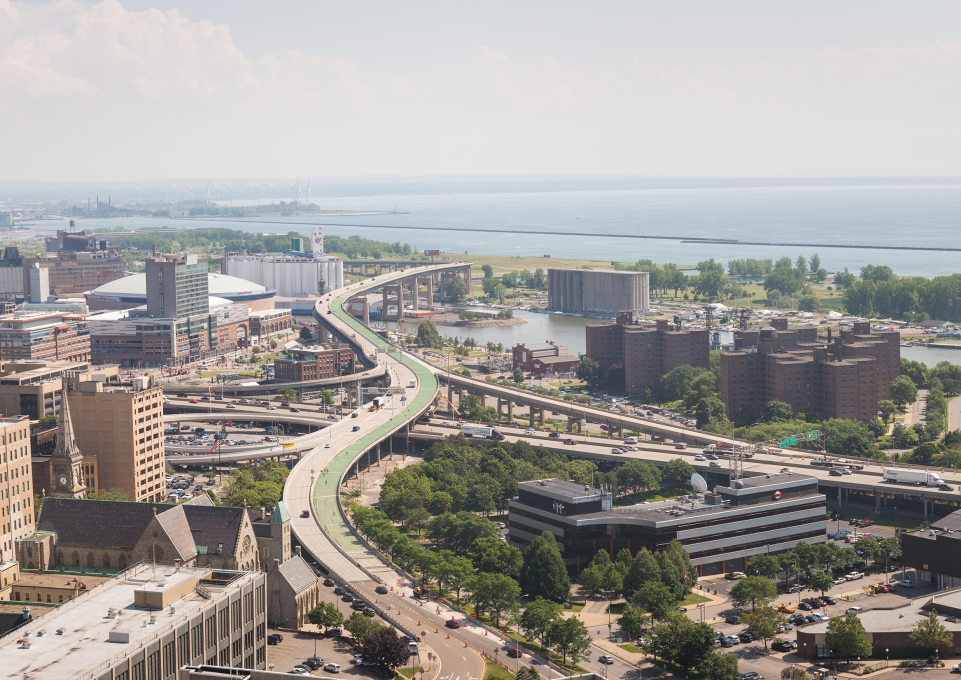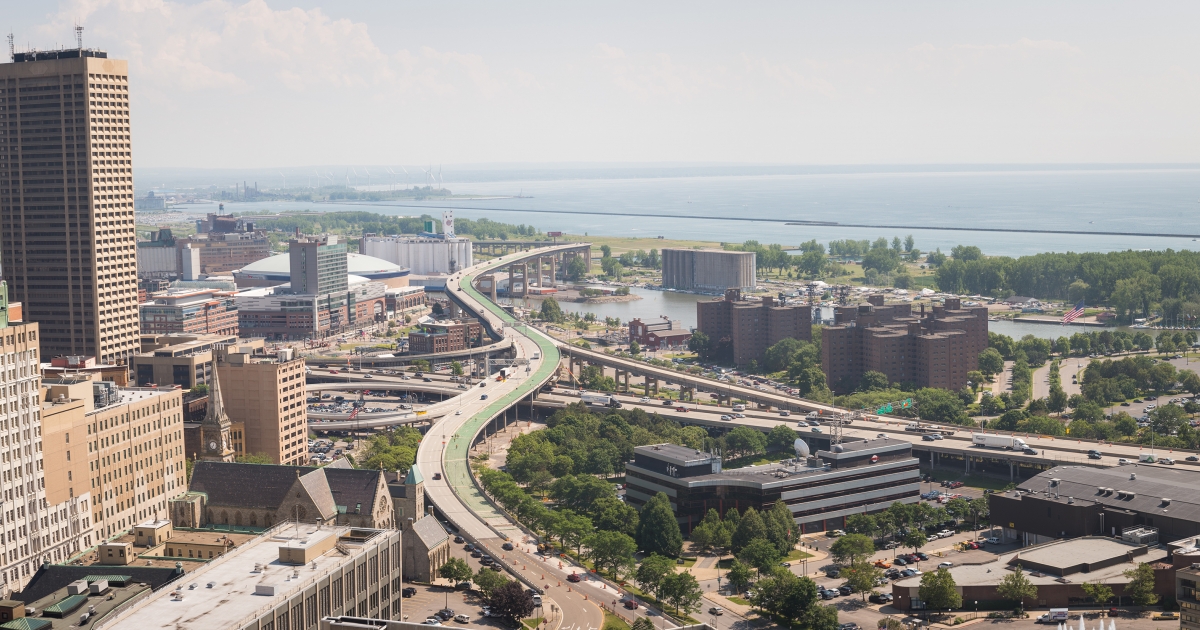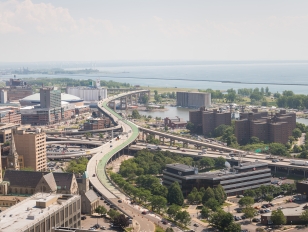
While it’s common to hear about philosophies and movements around “going green,” or employing environmentally friendly practices to reduce our carbon footprints and protect our environment, there’s another color that should come to mind when thinking of ecology and sustainability: blue.
Blue Economy, a concept originally developed in Michigan, pursues the economic benefits derived from the conservation of aquatic ecosystems. Buffalo State College partnered with Riverside Academy in 2017 to give students the opportunity to learn about the benefits of Blue Economy through three tracks: Aquaculture and Conservation, Travel and Tourism, and Health and Wellness. While the program initially started with ninth-graders, it has expanded to include students through grade 12.
Susan McCartney, director of the Small Business Development Center (SBDC), said Buffalo State had been engaged in Blue Economy before partnering with Riverside Academy, but the partnership has allowed both the college and the school to further develop the concept and how it encourages the exploration of local resources.
“Buffalo was put on the map because it was an industrial powerhouse back in the day. Over the past several years, we’ve been reclaiming that land, and we’re restoring the waterways, habitats, and shorelines.”
“We were fortunate enough to secure a multi-year grant from the Buffalo Public Schools,” McCartney said, “which allows us to help expand the understanding of students at Riverside Academy. The goal of the grant is to develop and manage the Blue Economy Programs at Riverside. We utilize everything at Buffalo State; that’s where the partnership comes in, to help provide enrichment to students to better understand Blue Economy.”
Buffalo State’s contributing resources include the Great Lakes Center’s Aquatic Ecology Lab, which helps Riverside students raise trout in their own aquatics lab at Riverside Academy; a health and wellness day, which includes yoga lessons and healthy cooking demonstrations; and a partnership with the Burchfield Penney Art Center, where students explore regionally inspired artwork and partake in watercolor lessons. Additionally, students in the program have taken field trips with exciting activities like pheasant releases, a visit to historic Niagara Falls, snowshoeing, and cross-country skiing.
Cecilia Pershyn, blue economy coordinator with Buffalo State’s SBDC, manages the blue economy educational programs at Riverside Academy. She said these activities are not only engaging students’ educational and recreational needs but also preparing them for careers.
“They get a lot of hands-on experience in the program,” Pershyn said, “and at the end of a track—for example the Health and Wellness program—they can actually qualify to take the personal training certification exam. So some of them might be able to be certified right out of high school, which is a huge opportunity. They can be prepared to go directly into the field after this, or they can go to college. And we hope that they come to Buffalo State.”
Buffalo’s unique positioning and history with the water make it the perfect region to explore and practice the principles of Blue Economy. In fact, one of the city’s famous monikers, City of Light, was born of Buffalo’s use of hydroelectric power from Niagara Falls, making Buffalo one of the first cities to have widespread streetlights in the nineteenth century. Additionally, being nestled between Lake Erie and Lake Ontario and flanked by the Niagara River equips the city with one of the four major bird flyway corridors and a multimillion-dollar world-class fishing industry. However, Buffalo’s aquatic goldmine was significantly tarnished before the revitalization that has taken place in recent years.
“Buffalo was put on the map because it was an industrial powerhouse back in the day,” Pershyn said. “And while that did help build our city, it left us with all these brownfields, these falling-down grain elevators, this desolate wasteland. So over the past several years, we’ve been reclaiming that land, and we’re restoring the waterways, habitats, and shorelines.”
Pershyn said this restoration has been important not only for the environment, but for the city’s economic growth as well.
McCartney said, “The good news is, we’re improving. The industry part of it is greatly regulated. That in itself has been a success story.”
The evolution of the Blue Economy Program has gone hand-in-hand with the evolution of Buffalo’s aquatic system. As milestones continue to develop, including the program’s first graduating class from Riverside Academy this year, the program is making waves both educationally and environmentally.
“We have this big, beautiful school and a program that’s really wonderful,” Pershyn said. “It’s really been amazing being a part of this from the ground up and watching it grow and be successful.”
Photo by Bruce Fox, campus photographer.



